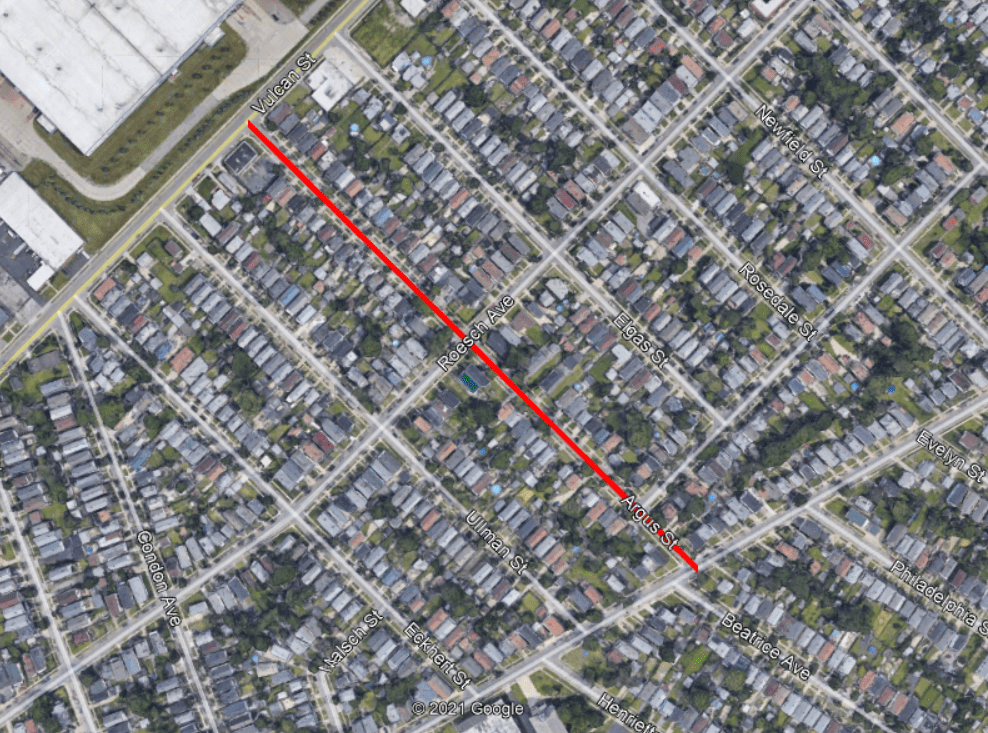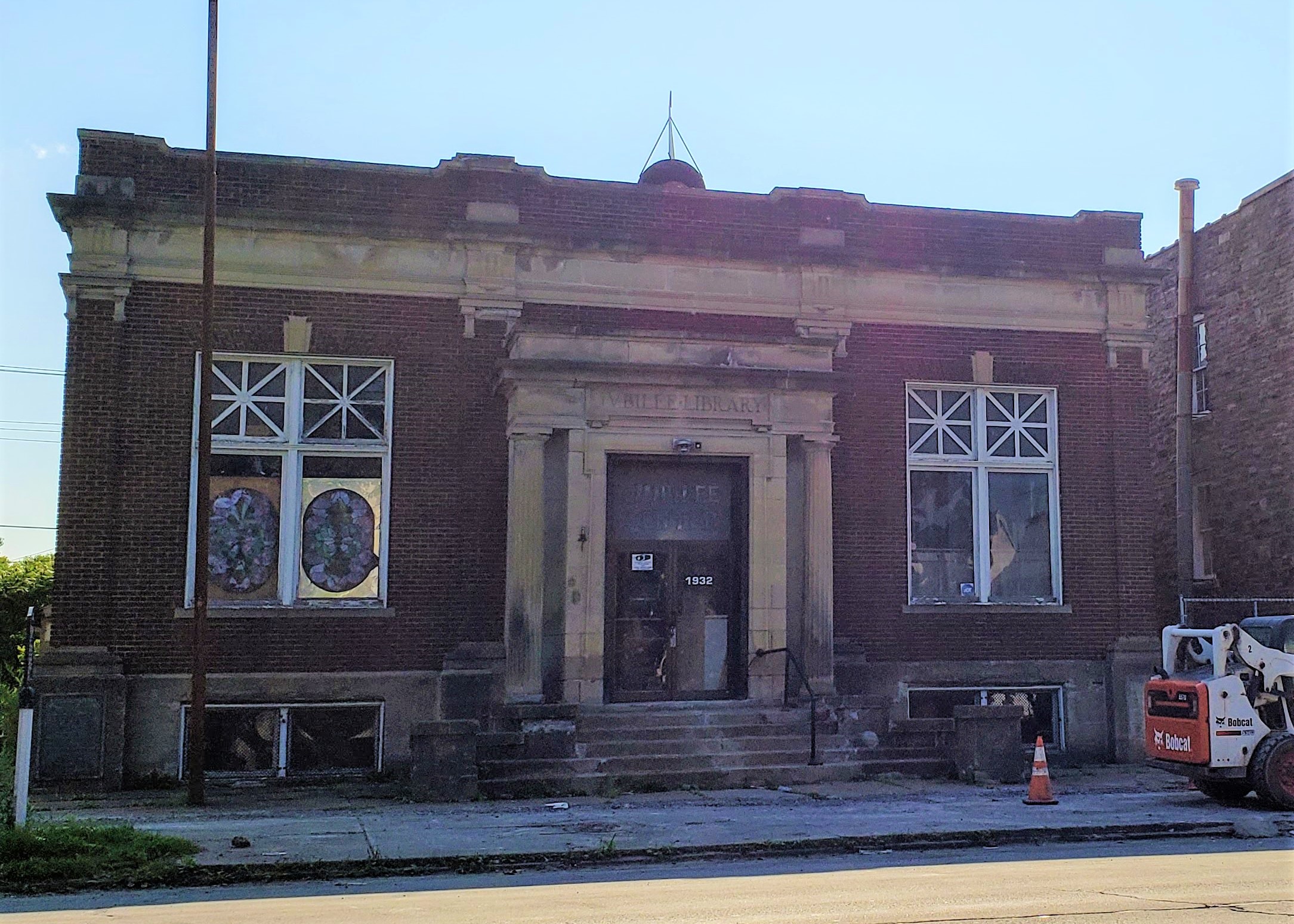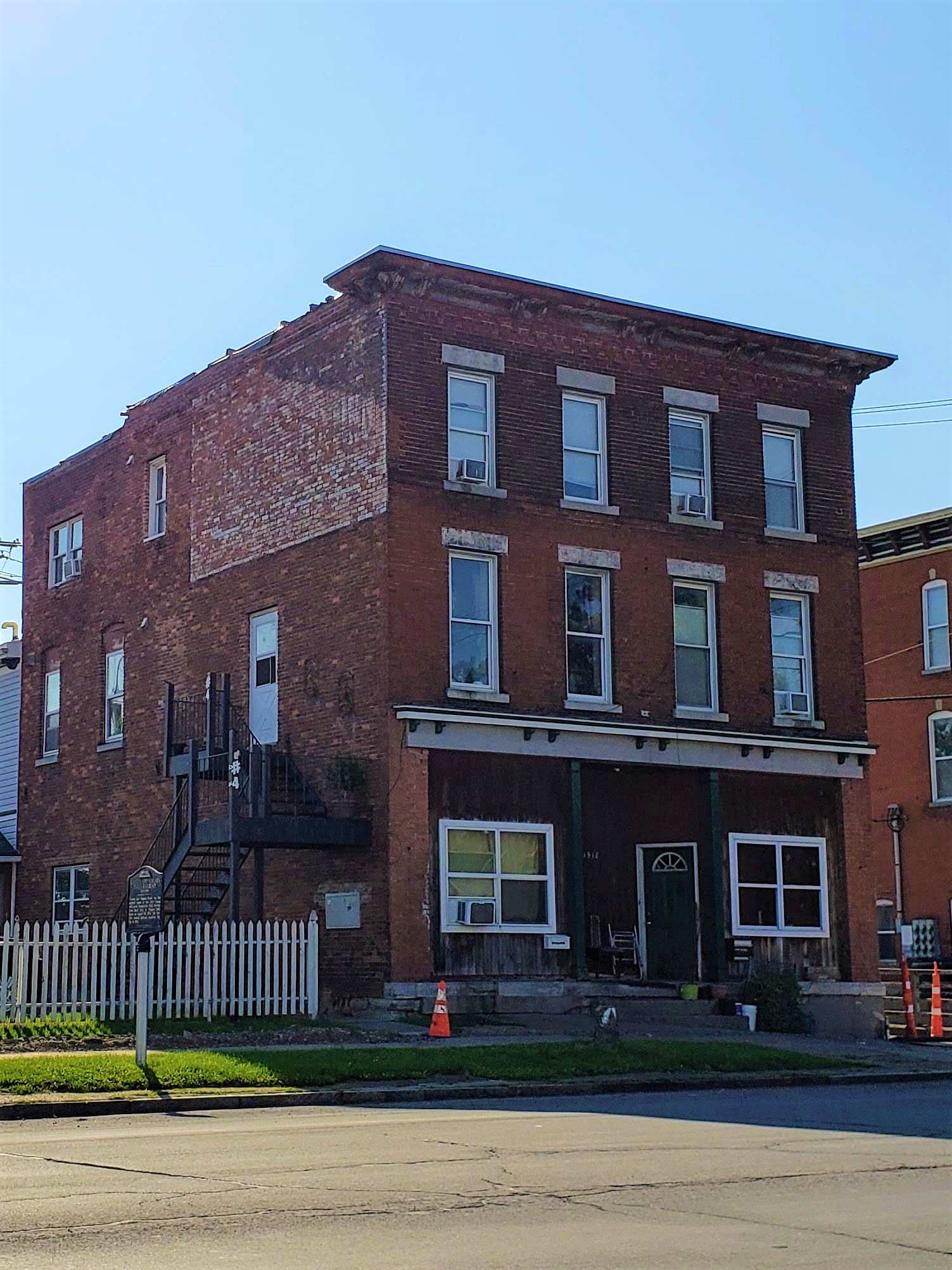 Argus Street is a short street in the Riverside Neighborhood of Buffalo. The street runs two blocks, between Esser Avenue and Vulcan Street. The street is named after Francis (Frank) X Argus, one of the original owners of the land that is now Riverside Park.
Argus Street is a short street in the Riverside Neighborhood of Buffalo. The street runs two blocks, between Esser Avenue and Vulcan Street. The street is named after Francis (Frank) X Argus, one of the original owners of the land that is now Riverside Park.

Jubilee Water Works at Delaware and Auburn. Source: Picture Book of Earlier Buffalo
George Argus, Frank’s father, came to Black Rock from Bavaria. George worked as a teacher in a parochial school and then went into the grocery business. Frank was born in Black Rock in 1854. Frank Argus was a commissioner of the old Jubilee Reservoir at the corner of Delaware Avenue and Auburn Avenue. It was located on the west side of the street between Auburn and Lancaster Avenues. The Jubilee Spring is the spring that gives the Cold Spring neighborhood it’s name – the spring ran through the basement of the Cold Spring tavern on Main Street at Ferry. The spring also feeds the lake at Forest Lawn Cemetery. The Jubilee Water Works was incorporated in 1827 by John G. Camp, Reuben Heacock, and Frederick Merrill to supply Buffalo and Black Rock with water. They built a system to serve Black Rock and began to expand to serve parts of Buffalo, but the Jubilee Springs could not provide enough water to keep up with the demand, so the system could not expand further. When Black Rock was annexed by the City of Buffalo in 1853, the City of Buffalo acquired the system, which was abandoned by 1890.

Jubilee Library. Photo by Author
After the reservoir was abandoned, the site was purchased by Albert F. Laub. Mr. Argus insisted that the property not be sold unless it was agreed that the funds used for the sale would be used to build a branch library. The Water Works property was sold in 1899, but it took years before the proceeds were released and a new location was selected. The Jubilee Branch library opened on December 20, 1915 at 1930 Niagara Street. The Jubilee Library was the first non-rented library space in Buffalo. It was designed to have a children’s side, an adult side and an auditorium in the basement. The site was constructed next door to a city-owned community center that also had a gym, creating a cohesive community oriented space. the site was selected by the City and there were concerns about the safety of children crossing the railroad tracks to get to the library, as well as its location along the water rather than in a neighborhood. The continued development of Black Rock proved that the Jubilee Branch was well suited to serve the community. It was particularly used by nearby industrial businesses for technical reference material. The success of the Jubilee Branch Library encouraged the library to pursue creating additional library branches built to be libraries, rather than using available existing spaces which they rented.

1916-1918 Niagara Street. Photo by Author
Mr. Argus married Mary Heims. They had two sons and two daughters- Francis, Clarence, Maud Argus Haley and Olive Argus Walsh. The family lived at 1916 Niagara Street (corner of Hamilton). For 40 years, Mr. Argus operated a hardware store in the same building where they lived. The store’s address was 1918 Niagara Street. The store sold hardware, cutlery and stoves. The building appears to still be standing today, and the store appears to be converted into apartments. The building would have had the Erie Canal flowing through it’s backyard, but now abuts the I-190. The children oriented towards medicine – Dr. Francis Argus became a nose and throat specialist after serving as a major in the Army Medical Corps during WWI, Dr. Clarence Argus became a dentist, and the daughters both married doctors. The daughters were graduates of Holy Angels Academy and accomplished pianists/organists.
When Mr. Argus, Mr. Esser and Mr. Hertel sold the Riverside Park property to the city, Mr. Argus insisted that the riparian rights allowing the building of a dock were relinquished to the city. This ensured that the public had access to the water. Mr. Argus was a boater and a charter member of the Buffalo Launch Club. He was also a member of the Knights of Columbus.
After retirement, Mr. Argus traveled throughout the United States. He spent winters in Florida, California or Cuba. He enjoyed returning for summers in Buffalo. He lived with his son in a house at 237 Lafayette Avenue. The house was known around town for Frank’s beautiful garden, which son Clarence continued after his father’s death. While Frank was gardening long before Garden Walk existed, Buffalonians still take pride in our gardens today – perhaps you even may have seen a house near Frank’s former house this weekend on Garden Walk?
Want to learn about other streets? Check out the Street Index. Don’t forget to subscribe to the page to be notified when new posts are made. You can do so by entering your email address in the box on the upper right hand side of the home page. You can also follow the blog on facebook. If you enjoy the blog, please be sure to share it with your friends.
Sources:
- “An Act to provide a mode for ultimate disposition of property belonging to the Jubilee water system in the City of Buffalo and investment of the proceeds.” Laws of the State of New York Passed at the One Hundred and Thirteenth Session. Chapter 154. Banks & Brothers Publishers, Albany, 1890.
- Pierce, Morris. “Documentary History of American Water-Works: Buffalo, New York”. http://www.waterworkshistory.us/
- Severance, Frank Ed. Picture Book of Earlier Buffalo. Buffalo Historical Society. 1912.
- Smith, H. Katherine. “Argus Street Reminds of Founder of Jubilee Library”. Buffalo Courier Express. June 21, 1941.
Another excellent story! Anyone who fosters public libraries deserve to have a larger street named after them!
I agree! Public libraries are so important for communities!!!
[…] was part of the large tract of land that was purchased by Louis Roesch, John Hertel, John Esser and Frank Argus as the Black Rock Land Company, one of the first development companies in Buffalo. Streets were […]